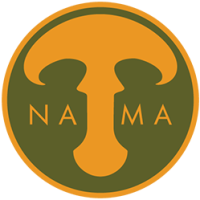Manual of Instructional Materials for Teachers and Naturalists Teaching About Fungi: Grades K-12
Introduction
The following files may be downloaded and copied for educational purposes only. They include teaching materials appropriate for Grades K-3, Grades 4-12 and adult education use in a classroom or lab setting. Additional material includes games, outdoor activities and extracurricular assignments. Particular attention should be given to two resources: The Fungus Files: An Educator’s Guide to Fungi K-6 (terraBrie Stewart, Second Edition); and How the Mushroom Got its Spots, An Explainers Guide to Fungi, (Sue Assinder and Gordon Rutter, members of the British Mycological Society Education Group). Both are available below in pdf format. Further reference material can be found in a new Lesson Plan. The lessons may be enhanced with samples of fresh or dried fungi, books, posters, hand lenses, and drawing materials.
Contents
Classroom Teaching Materials, Grades K-12
- The Fungus Files: An Educator’s Guide to Fungi K-6. This educator’s guide explores the world of fungi through worksheet activities, hands-on activities, and classroom demonstrations. An excellent resource for K-6, and an excellent resource of basic information for adults. Written by Terra Brie Stewart and illustrated by Rost Koval.
- How Mushrooms Grow, Grades K-12. Nine color drawings by Louise Freedman; used best when projected onto a screen and discussed with class
- Basic 45 Minute Lesson on Fungi, Grades K-12
- Questions about Mushrooms, Grades K-3
- Questions about Fungi, There’s Fun in Fungi, Grades 4-12
- More Questions About Fungi, Grades 4-12
- Further Fungi Activities, Grades 4-8
- Mushroom Workshop, Grades K-12
- The Fungal Kingdom, Grades 4-12
- Math-Science Unit 1, Grades 4-8
- Math-Science Unit 2, Grade 9-12
- Charting Mold Growth, Grades 2-6
- Making Yeast Bread, Grades 3-6
- Mushroom Common Names, Grades 4-12
- Mushroom Dissection Lab, Grades 8-12
- Mold Control Activity created by the Hydroville Curriculum Project at the Environmental Health Sciences Center of Oregon State University (The original activity utilizes 3M Petrifilms and the alternative version utilizes potato dextrose agar plates. The activities are identical, however the lab protocol differs depending on the plating method used. The activity uses yeast instead of mold since yeast is easier to work with.)
Further Teaching Activities
- Fun With Fungi – Field Trip Activities, Grades 4-12
- Fun With Fungi – Post-trip Activities, Grades 4-12
- Fun With Fungi – Instructor Reference Material, Grades 4-12
- A Few Comparisons, Grades 4-8
- Spring Mushrooms, Grades 4-12
- Art Papers from Fungi, Grades 4-12
- I Grow Mushrooms, Mushroom Cultivation
- Careers in Mycology: Mycological Society of America poster
- References for Teaching About Fungi
Recommended Books for Teachers
- Assinder, Sue; Rutter, Gordon, How the Mushroom Got its Spots: An Explainers’ Guide to Fungi. British Mycological Society Education Group, Royal Botanic gardens, Kew, Richmond, Surrey, TW9 3AE UK and The Biotechnology and Biological Sciences Research Council, Polaris House,Swindon, Wiltshire, SN2 1UH UK, 2002
- Kendrick, Bryce, A Young Person’s Guide to the Fungi. Mycologue Publications, Waterloo, Ontario, Canada, 1986
- Arora, David. Mushrooms Demystified. Ten Speed Press, Berkeley, CA, 1986
- Lincoff, Gary. The Audubon Society Field Guide to North American Mushrooms. Alfred A. Knopf, Inc., New York, 1981
- Watling, Roy. Fungi. Smithsonian Institution Press, 2003

NAMA Store >